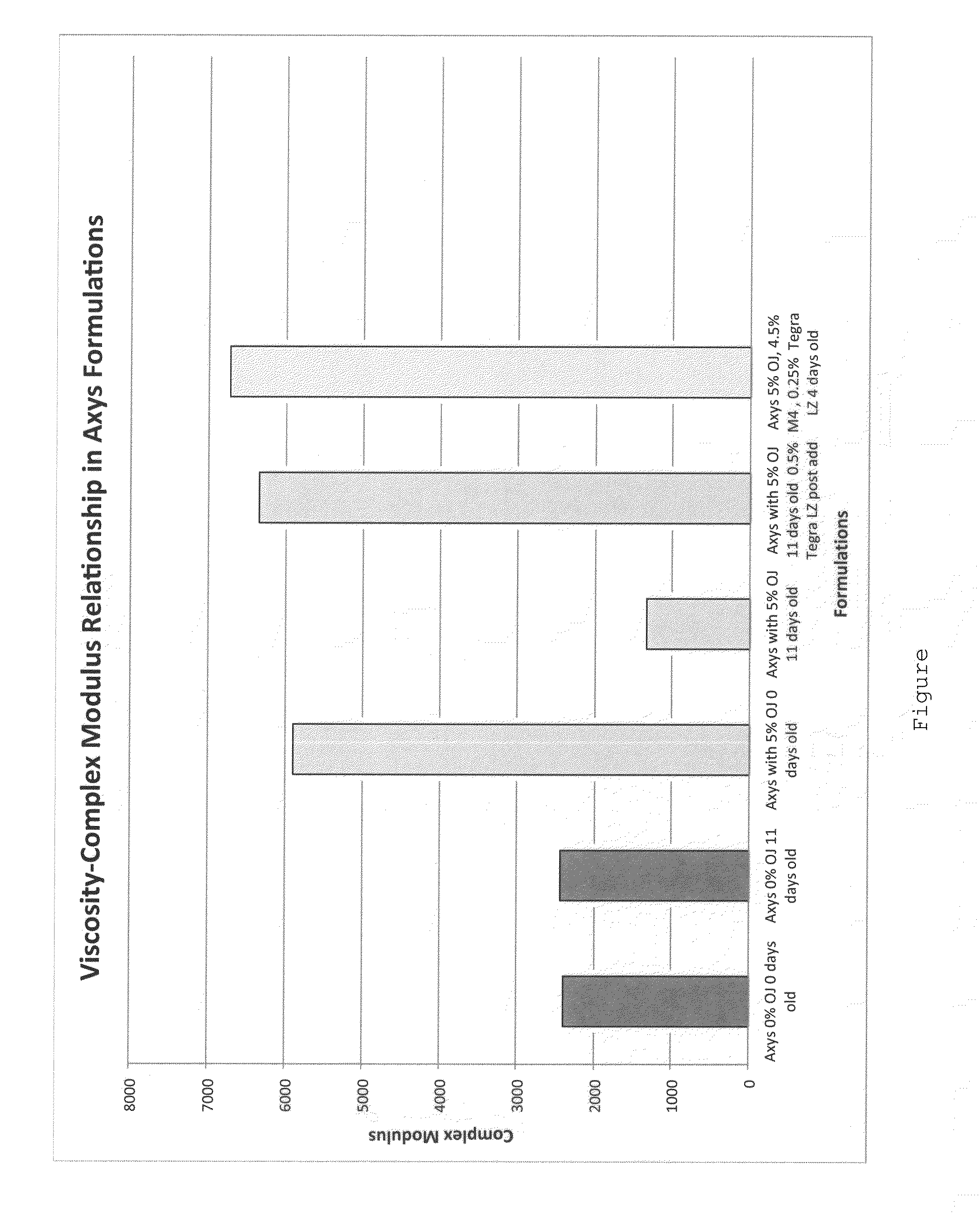Composition and method for roads, parking lots, and driving surfaces
a technology for parking lots and driving surfaces, applied in the direction of single unit paving, pavement lights, roads, etc., can solve the problems of material can become sticky and track across the pavement, ambient asphalt emulsion compositions and techniques currently used in the art are generally known for their poor quality and lack of bonding to existing pavements, etc., to prevent flocculation of aqueous suspension, increase the viscosity of aqueous suspension, and increase the visco
- Summary
- Abstract
- Description
- Claims
- Application Information
AI Technical Summary
Benefits of technology
Problems solved by technology
Method used
Image
Examples
example
[0070]A cationic asphalt sealer composition was prepared by adding the following components to water in the amounts stated and in the order listed.
Example (A) & (B)Percentageby weightComponentcompositionManufacturerWater38.19% Dunn B Clay20.2%Old Hickory ClayHubercarb M4 0%Huber Specialty MineralsMidnite Blak Carbon2.25%Specialty DispersionsBlackTegra GT 5.6%Invia Pavement TechnologiesTegra OJ 0.0%Invia Pavement TechnologiesCSS-1HH33.7%Invia Pavement TechnologiesBlack Beauty X Fine 0%Harsco Specialty MineralsTegra LZ 0%Invia Pavement TechnologiesBiocide .06%Various
[0071]When the material was only allowed to age 4 hours before testing began and then allowed to cure for 4 days (composition A), the complex modulus of the hardened sealer was 2300 kPa. When applied after 11 days of storage and allowed to cure for 17 hours (composition B), the complex modulus of the hardened sealer was substantially the same. The results are illustrated in the Drawing.
[0072]Next a sealer composition in...
PUM
| Property | Measurement | Unit |
|---|---|---|
| particle size | aaaaa | aaaaa |
| rotational viscosity | aaaaa | aaaaa |
| rotational viscosity | aaaaa | aaaaa |
Abstract
Description
Claims
Application Information
 Login to View More
Login to View More - R&D
- Intellectual Property
- Life Sciences
- Materials
- Tech Scout
- Unparalleled Data Quality
- Higher Quality Content
- 60% Fewer Hallucinations
Browse by: Latest US Patents, China's latest patents, Technical Efficacy Thesaurus, Application Domain, Technology Topic, Popular Technical Reports.
© 2025 PatSnap. All rights reserved.Legal|Privacy policy|Modern Slavery Act Transparency Statement|Sitemap|About US| Contact US: help@patsnap.com

